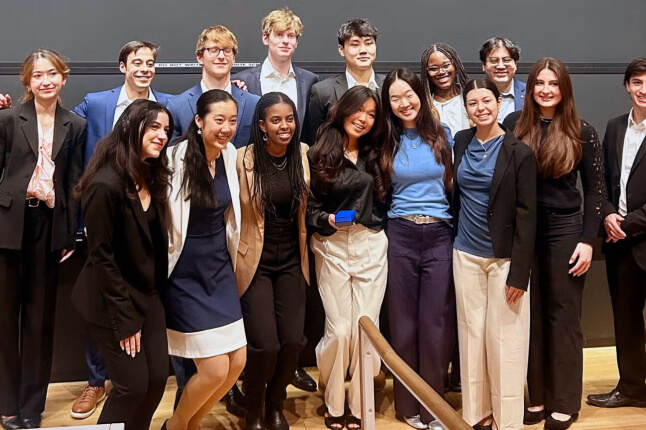News
How students learn – and faculty teach – changed dramatically during the pandemic. Many students were introduced for the first time to video lessons and virtual classrooms.
Shiv Gaglani, A.B. 10, founded Osmosis, a company that offers video lessons on numerous topics that are part of standard medical school or STEM curricula, in 2010. (Credit: Shiv Gaglani)
Remote learning posed numerous challenges for teachers and students alike, but it was also an opportunity for Shiv Gaglani (A.B. ‘10). Gaglani, who earned a degree in biomedical engineering at the Harvard John A. Paulson School of Engineering and Applied Sciences (SEAS), founded Osmosis in 2016, a company that offers video lessons on numerous topics that are part of standard medical school or STEM (science, technology, engineering and mathematics) curricula.
With much of the world now reliant on video learning, Osmosis thrived during a pandemic that hampered so many businesses and industries.
“With the last two years of the pandemic, telehealth and remote online learning have exploded,” Gaglani said. “In 2020, it went from 40 institutions that had partnered with Osmosis to over 120. We went from about 1 million annual visitors to our website to 8 million in the last three years, and that trend more than doubled in the last 12 months.”
Gaglani and Ryan Haynes founded Osmosis while in medical school at Johns Hopkins University. The idea began when Gaglani applied his SEAS education by creating a series of electronic flashcards to help classmates quiz each other.
“I took CS50, ‘Introduction to Computer Science,’ with David Malan at SEAS, and I was the original programmer of our data analytics dashboard just using the CS50 knowledge,” he said. “There may even still be some code in the Osmosis code base from that time.”
Osmosis uses the idea of the “flipped classroom,” an instructional strategy popularized by Balkanski Professor of Physics and Applied Physics Eric Mazur, that utilizes online and remote learning outside of the classroom, and focuses on student participation and engagement instead of lectures during classes.
With so much remote learning over the last two years, Gaglani’s company provided a critical resource.
“We’re still experimenting, and now with over 150 university partners around the world, our products range from working like a textbook subscription, to being foundational to the curriculum,” he said. “Our hope is to eventually virtualize as much of medical and other health professional schools as possible, so that even more people can contribute to the healthcare system.”
Osmosis was recently acquired by global publishing company Elsevier, which Gaglani hopes will enable further expansion.
“We want to educate a billion people by 2025,” Gaglani said. “With their resources, it was clear that Elsevier was the best company to partner with to do that.”
Reaching a billion people will require engaging with people all over the world, including patients and caregivers as well as students, educators, and health professionals.
Gaglani hopes the Elsevier acquisition, as well as partnerships with major platforms like YouTube and Wikipedia, will increase Osmosis’ international presence.
“Many medical and other health professional programs are starting because there’s a huge demand for healthcare professionals, even more so now with COVID,” he said. “New schools such as Kaiser Permanente use Osmosis as a fundamental part of their curriculum. And then there are other schools that we work with that have been around for a long time, so some of them are using it as supplemental content. There’s a lot more interest and excitement about the space.”
Topics: Alumni, Bioengineering, Entrepreneurship
Cutting-edge science delivered direct to your inbox.
Join the Harvard SEAS mailing list.
Press Contact
Matt Goisman | mgoisman@g.harvard.edu


